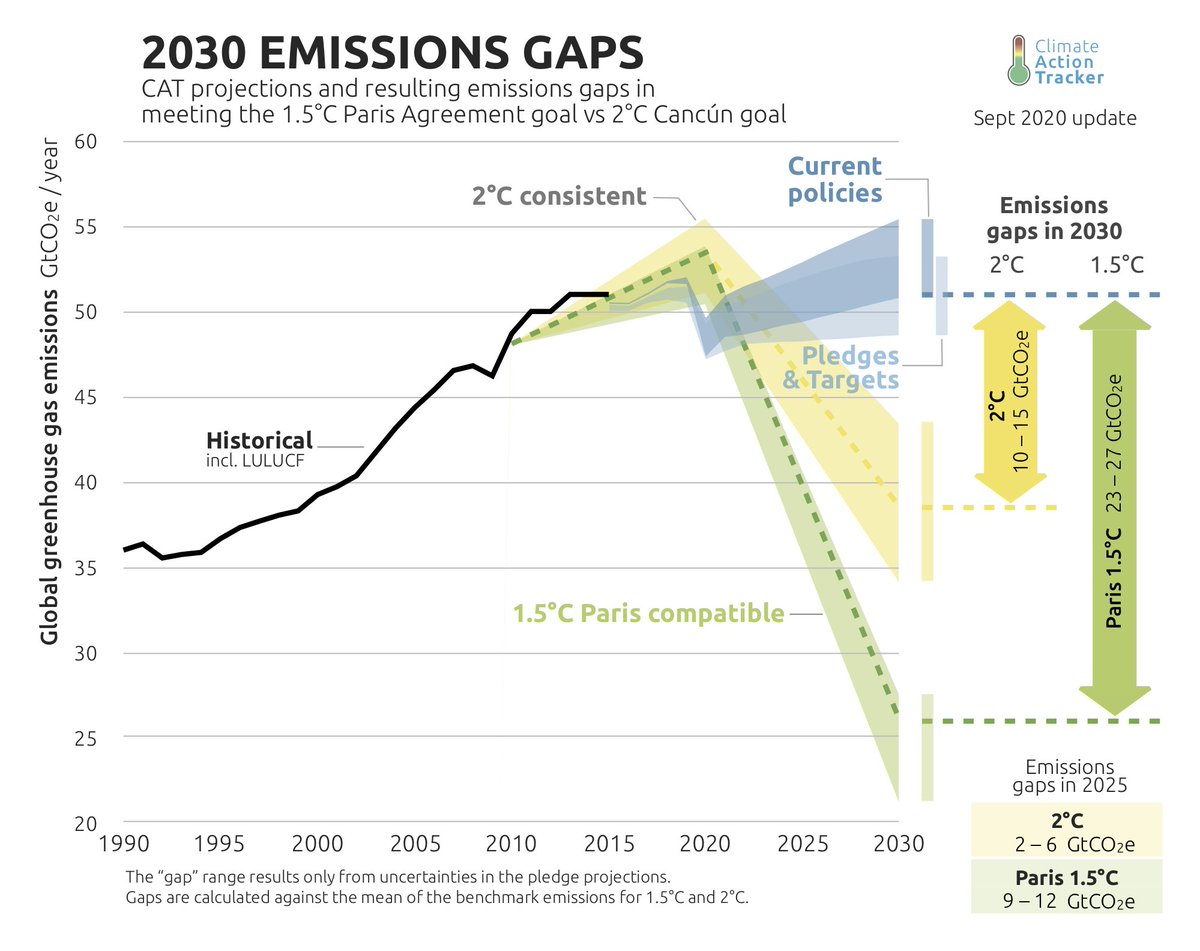
BREAKING: If all governments were to meet their promised #NetZero targets, warming in 2100 would be 2.1˚C. Our new analysis - full report here bit.ly/CAT_Nov2020 THREAD 

2/ Our estimates include 127 government net zero promises, totalling more than 63% of global emissions. Including China, the US (Biden's promise), Japan, South Korea. bit.ly/CAT_Nov2020 

3/ It's clear the #ParisAgreement is having an impact. This graphic shows the history of how we got here. Our full report here bit.ly/CAT_Nov2020 #climate #unfccc 

4/ But, all eyes on 2030 targets: not one of the big emitters has strengthened their #ParisAgreement #NDC targets, despite the 2020 deadline. Without strong 2030 targets, #NetZero promises will fail. The emissions gap remains huge. bit.ly/CAT_Nov2020 #climate #unfccc 

• • •
Missing some Tweet in this thread? You can try to
force a refresh















